This article relies largely or entirely on a single source .(December 2022) |
The year 1804 in birding and ornithology .
This article relies largely or entirely on a single source .(December 2022) |
The year 1804 in birding and ornithology .
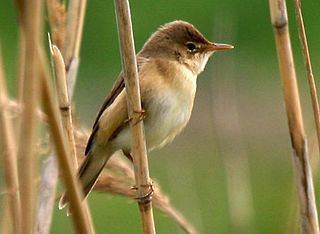
The common reed warbler is an Old World warbler in the genus Acrocephalus. It breeds across Europe into the temperate western Palaearctic where it is migratory, wintering in sub-Saharan Africa. It is also a resident species over large parts of Africa.

The Jardin des plantes, also known as the Jardin des plantes de Paris when distinguished from other jardins des plantes in other cities, is the main botanical garden in France. The term Jardin des plantes is the official name in the present day, but it is in fact an elliptical form of Jardin royal des plantes médicinales, which is related to the original purpose of the garden back in the 17th century.

Bernard-Germain-Étienne de La Ville-sur-Illon, comte de Lacépède or La Cépède was a French naturalist and an active freemason. He is known for his contribution to the Comte de Buffon's great work, the Histoire Naturelle.

The bearded barbet is an African barbet. Barbets are birds with a worldwide tropical distribution, although New World and Old World barbets are placed in different families. The barbets get their name from the bristles which fringe their heavy bills.

Pieter Boddaert was a Dutch physician and naturalist.

Johann, or Jean-Frederic, Hermann, or Herrmann, was a French physician and naturalist.

The giant kingfisher is the largest kingfisher in Africa, where it is a resident breeding bird over most of the continent south of the Sahara Desert, other than the arid southwest.

The red collared dove, also known as the red turtle dove, is a small pigeon which is a resident breeding bird in the tropics of Asia. The male has a blue-grey head and a red-brown body. The female is much plainer, with pale brown plumage similar to that of the larger Eurasian collared dove.

The lilac-tailed parrotlet is a species of bird in subfamily Arinae of the family Psittacidae, the African and New World parrots. It is found in Colombia, French Guiana, Guyana, Suriname, Trinidad, and Venezuela.

Aegithalos is a genus of passerine birds in the family Aegithalidae (bushtits), encompassing majority of the species in the family.
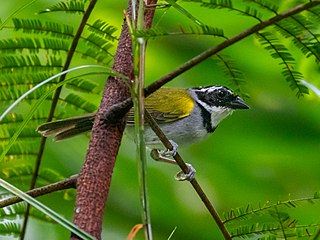
The pectoral sparrow is a species of bird in the family Passerellidae. It is found in Bolivia, Brazil, Colombia, French Guiana, Guyana, Peru, Suriname, and Venezuela. Its natural habitat is subtropical or tropical moist lowland forests. The Brazilian name for this species is tico-tico-de-bico-preto, which in translation means "black billed sparrow".

The Amazonian barred woodcreeper is a sub-oscine passerine bird in subfamily Dendrocolaptinae of the ovenbird family Furnariidae. It is found in Bolivia, Brazil, Colombia, Ecuador, French Guiana, Guyana, Peru, Suriname, and Venezuela.

Dendrocolaptes is a genus of Neotropical birds in the Dendrocolaptinae subfamily.

The thrush-like antpitta is a species of bird in the antpitta family Grallariidae. It is found in Amazonia.

The white-crested spadebill is a species of passerine bird in the tyrant flycatcher family Tyrannidae. It is found in Bolivia, Brazil, Colombia, Ecuador, French Guiana, Guyana, Peru, Suriname, and Venezuela. Its natural habitat is subtropical or tropical moist lowland forests.

Tinamus is a genus of birds in the tinamou family Tinamidae. This genus comprises some of the larger members of this South American family.
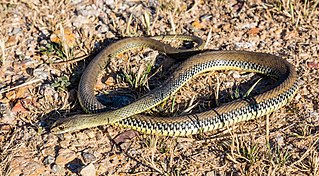
Malpolon monspessulanus, commonly known as the Montpellier snake, is a species of mildly venomous rear-fanged snake.
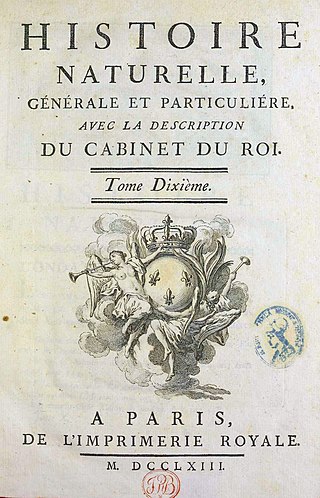
The Histoire Naturelle, générale et particulière, avec la description du Cabinet du Roi is an encyclopaedic collection of 36 large (quarto) volumes written between 1749–1804, initially by the Comte de Buffon, and continued in eight more volumes after his death by his colleagues, led by Bernard Germain de Lacépède. The books cover what was known of the "natural sciences" at the time, including what would now be called material science, physics, chemistry and technology as well as the natural history of animals.
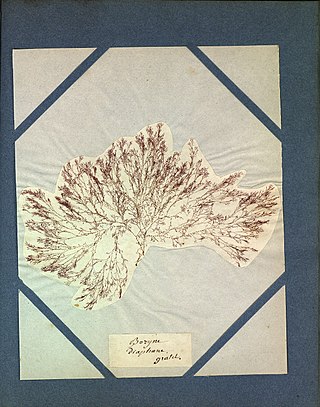
Ceramium diaphanum is a species of marine red algae.

Craterium is a genus of slime molds belonging to the family Physaraceae. The genus has a cosmopolitan distribution.